Why visit India?
India bristles with a mind-stirring mix of landscapes and cultural traditions. Your journey through this intoxicating country will blaze in your memory long after you have left its shores. Spirituality is the common thread that merges its way through the vast and complex India. The multitude of sacred sites and time-honored rituals are testament to the country's long, colorful, and sometimes chaotic, religious history. And then there are the festivals! India hosts some of the world's most spectacular devotional celebrations – from formidable city parades celebrating auspicious events on the religious calendar to simple harvest fairs that pay homage to a locally worshipped deity.
From the high-ceilinged snow-dusted mountains of the far north to the steamy sun-washed beaches of the deep south, India's dramatic terrain is breathtaking. Along with abundant natural beauties, delicately carved temples rise majestically out of pancake-flat deserts and crumbling old fortresses peer over dipping canyons.
The hungry traveler will enjoy meals of traditional preparation techniques and presentation styles, from the competing flavors of masterfully marinated meats to the simple splendor of vegetarian curries and deep-sea delights. India loves to toss up the unexpected. This can be challenging, particularly for the first-time visitors to Mystic India.
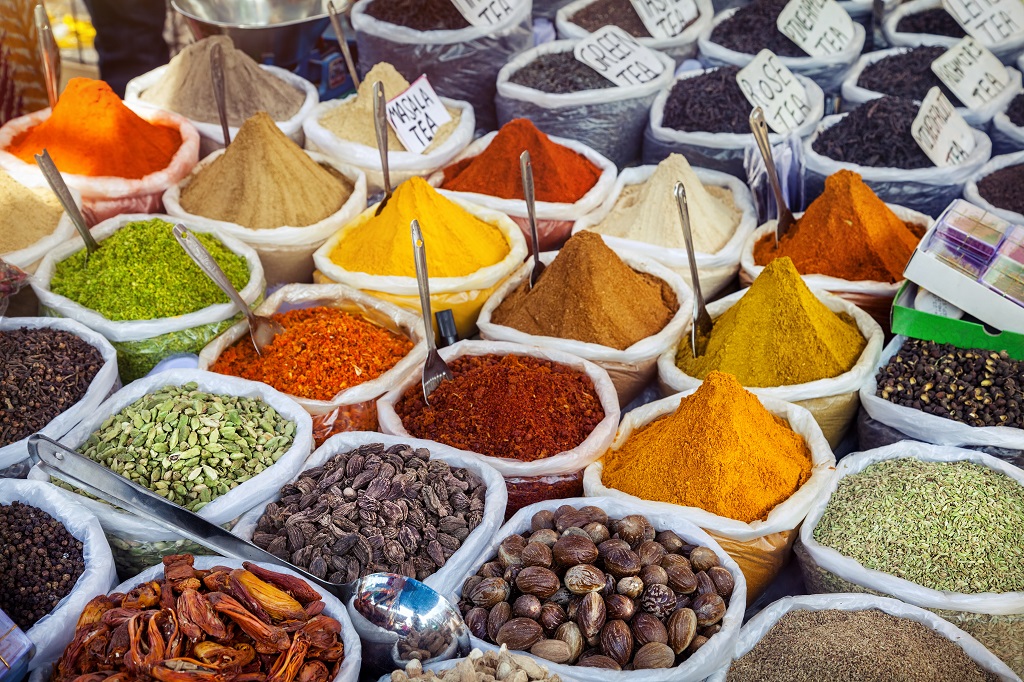
What does India bring in mind?
Taj Mahal
Rabindranath Tagore described it as 'a teardrop on the cheek of eternity', while its creator, Emperor Shah Jahan, said it made 'the sun and the moon shed tears from their eyes'. Every year, tourists numbering more than twice the population of Agra pass through its gates to catch a once-in-a-lifetime glimpse of what is widely considered the most beautiful building in the world. The Taj was built by Shah Jahan as a memorial for his third wife, Mumtaz Mahal, who died giving birth to their 14th child in 1631. The death of Mumtaz left the emperor so heartbroken that his hair is said to have turned grey virtually overnight. Construction of the Taj began the following year and, although the main building is thought to have been built in eight years, the whole complex was not completed until 1653. Not long after it was finished Shah Jahan was overthrown by his son Aurangzeb and imprisoned in Agra Fort where, for the rest of his days, he could only gaze out at his creation through a window. Following his death in 1666, Shah Jahan was buried here alongside Mumtaz. In total, some 20,000 people from India and Central Asia worked on the building. Specialists were brought in from as far away as Europe to produce the exquisite marble screens and pietra dura (marble inlay work) made with thousands of semiprecious stones. The Taj was designated a World Heritage Site in 1983 and looks as immaculate today as when it was first constructed – though it underwent a huge restoration project in the early 20th century.

|
Buddhist Caves of Ajanta Being Ellora’s esteemed twin in the World Heritage listings, the Buddhist caves of Ajanta, 105 km northeast of Aurangabad and about 60 km south of Jalgaon, are the Louvre of ancient India. Much older than Ellora, these secluded caves date from around the 2nd century BC to the 6th century AD and were among the earliest monastic institutions to come up in the country. |
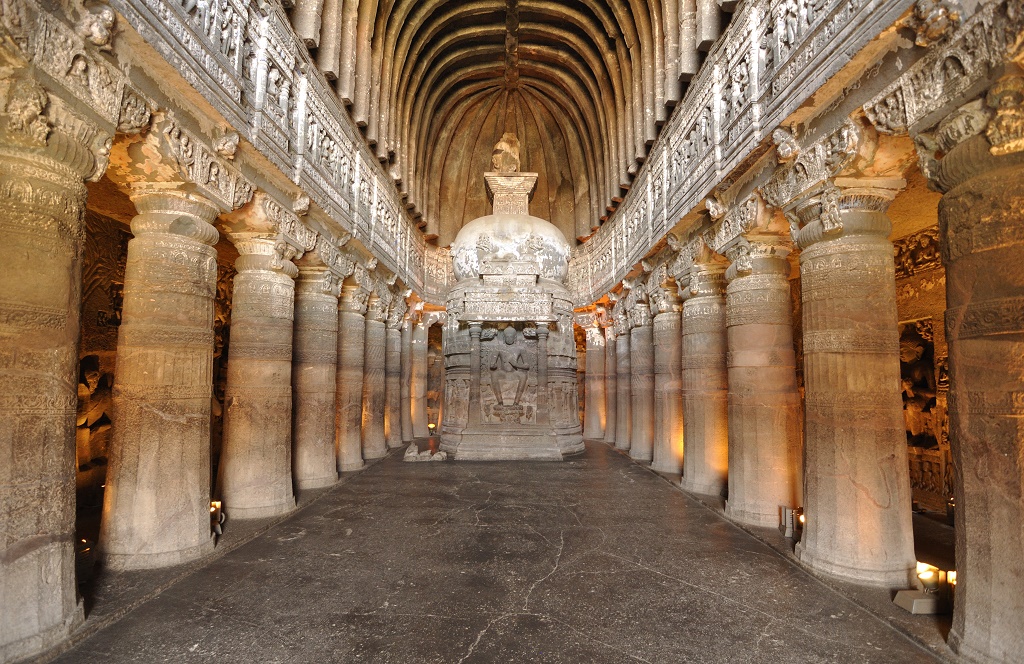 |
The Beaches of Goa
Swaying palms, white sands and sparkling waters: the three essential elements that attract 2 million visitors annually to Goa. A solitary Portuguese outpost in India; the influence of colonial rule can still be seen everywhere, whether in the exquisite, crumbling architecture or in the East-meets-West cuisine which combines coconut milk, palm vinegar and chilies with the refined flavors of Lisbon. Goa is one of the most visited spots in all of India.
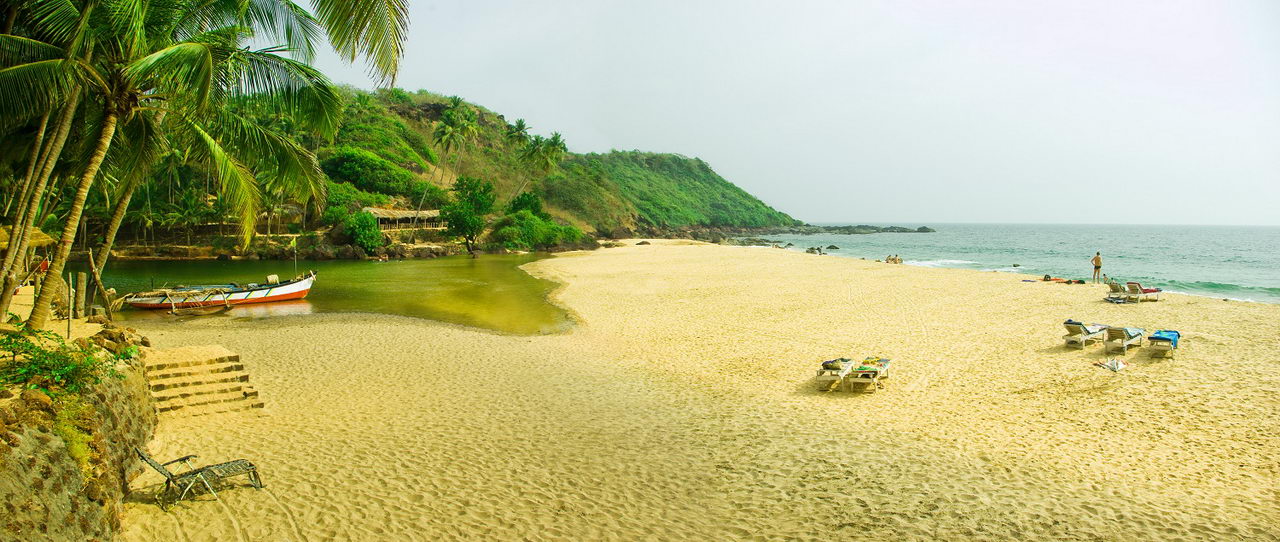
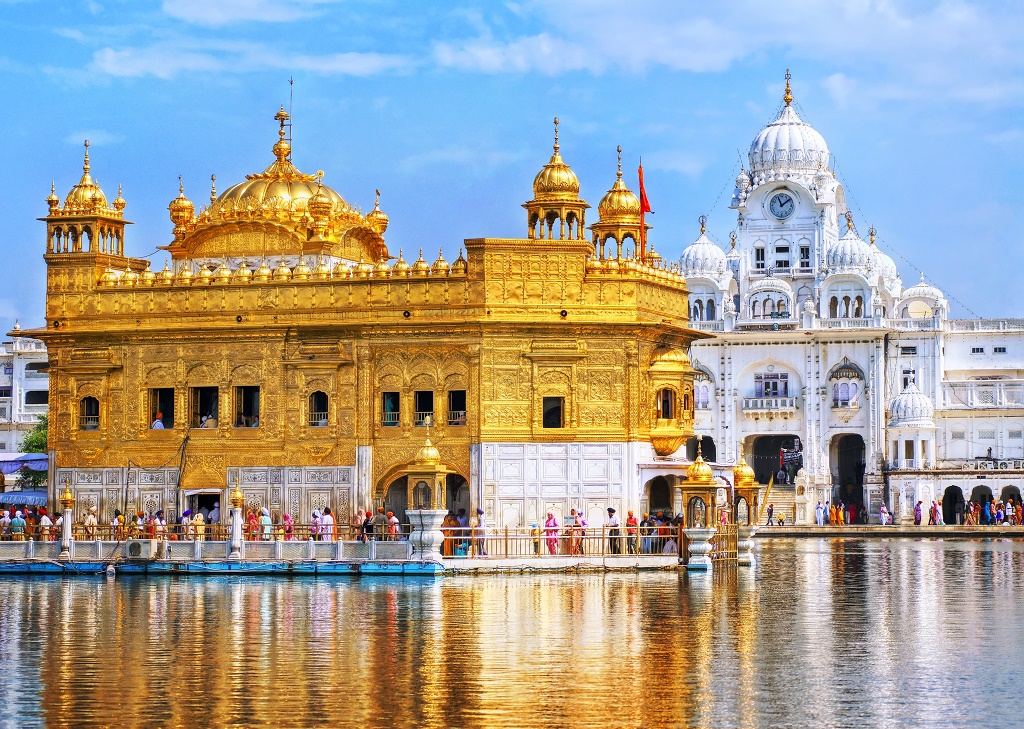 Golden Temple, Armistar |
The Golden Temple The legendary Golden Temple is actually just a small part of this huge gurdwara complex, known to Sikhs as Harmandir Sahib (or Darbar Sahib). Spiritually, the focus of attention is the tank that surrounds the gleaming central shrine – the Amrit Sarovar (Pool of Nectar), from which Amritsar takes its name, excavated by the fourth guru Ram Das in 1577. Ringed by a marble walkway, the tank is said to have healing powers, and pilgrims come from across the world to bathe in the sacred waters. |
|
Hampi A World Heritage Site, Hampi is a place where you can lose yourself among the ruins, or simply be mesmerized by the vagaries of nature, wondering how millions of years of volcanic activity and erosion could have resulted in a landscape so fascinating. Hampi is a major pit stop on the traveler circuit, with the cooler months of November to March being the peak season. Hampi Bazaar and the southern village of Kamalapuram are the two main points of entry to the ruins. |
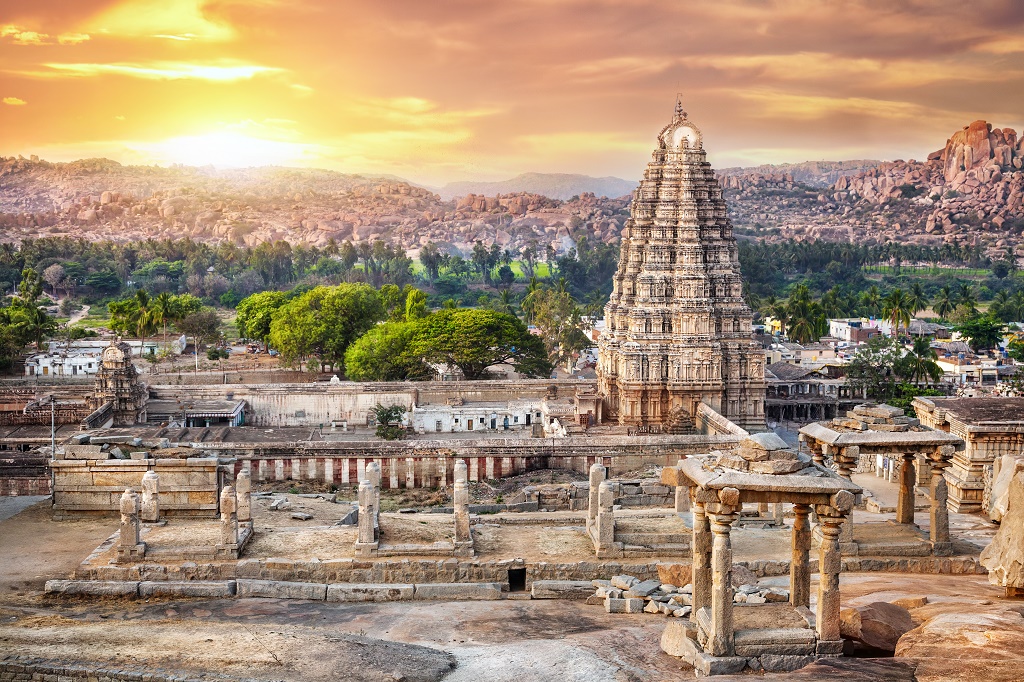 Virupaksha temple view from Hemakuta hill at sunset |
Madurai Lotus Temple
One of South India's great temple towns, Madurai is synonymous with the celebrated Meenakshi Temple. Situated on the banks of river Vaigai, Madurai has a rich cultural heritage passed on from the great Tamil era more than 2500 years old. Madurai was an important cultural and commercial centre even as early as 550 AD. It was the capital city for the great Pandya kings. The Pandyan King built a great temple and created a lotus shaped city around the temple. On the day the city was to be named, as Lord Shiva blessed the land and its people, divine nectar (Madhu) was showered on the city from his matted locks. This city was henceforth known as Madhurapuri. Madurai is famous for Jasmine Flowers.
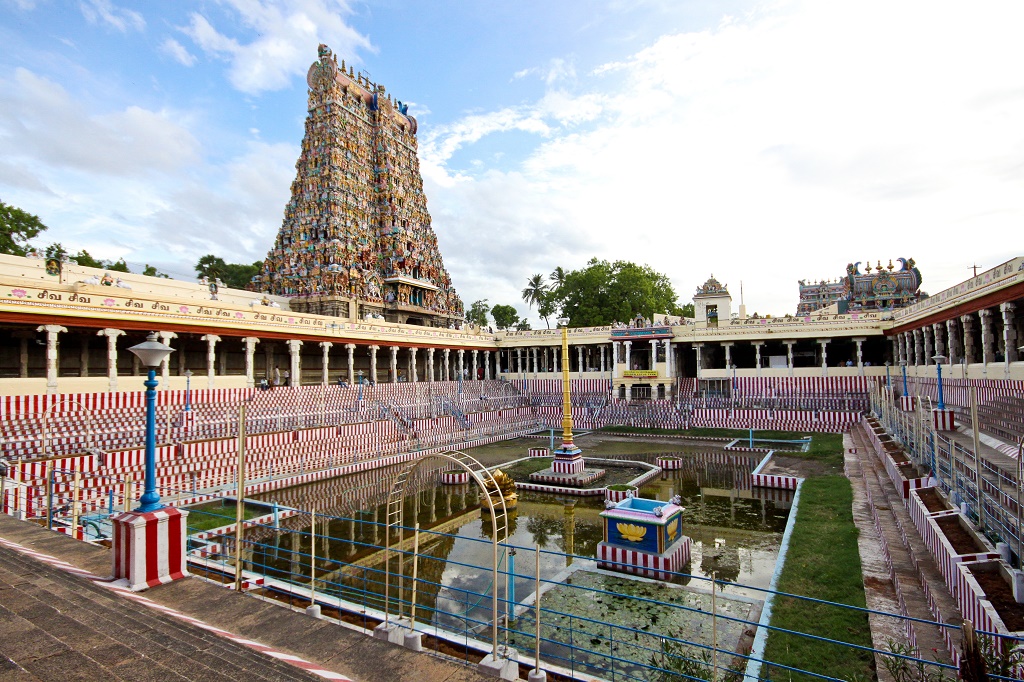
Sri Meenakshi Temple, Madurai
|
Camel Safari One of the most unforgettable and enchanting experiences you can have in India is to ride through the flowing, exposed desert on camel back and camp out under the stars. Taking a camel safari will also give you the opportunity to witness the pastoral, rural desert life of India. While the desert can be sterile, it is also surprisingly well populated. The most popular place for camel safaris in India is in the desert surrounding Jaisalmer, in Rajasthan. Great camel safaris can also be done around Bikaner, also in Rajasthan. Many companies will give you the option of choosing your route, so you can decide if you want to take the road less traveled, or the more touristy track. |
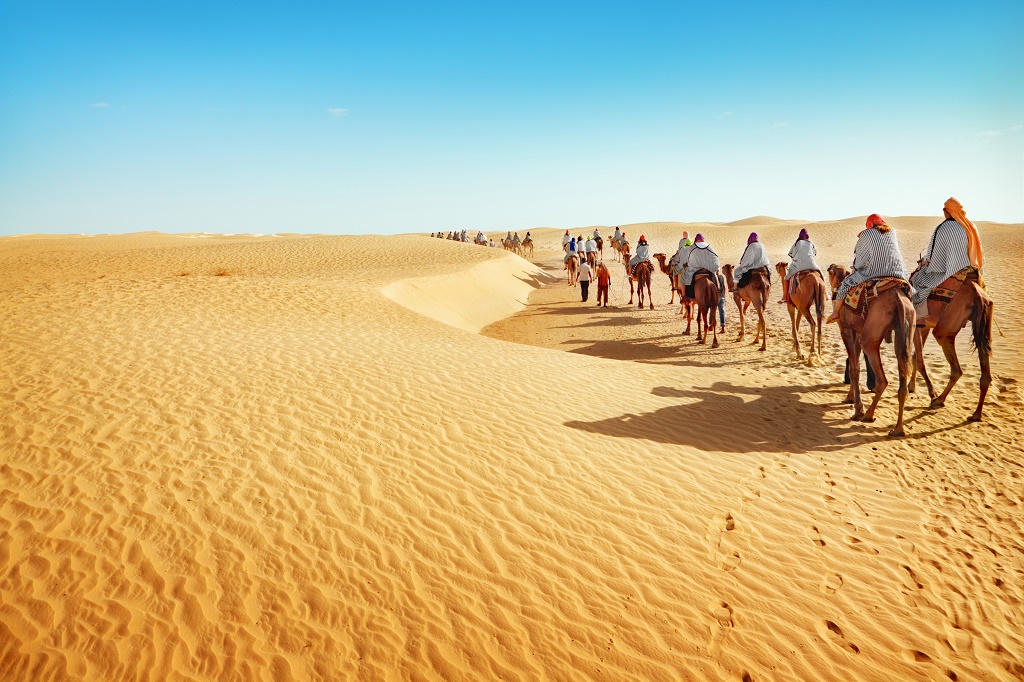 |
Vittala Temple
From the eastern end of Hampi Bazaar, a track, best covered on foot, leads left along the riverbank to the Vittala Temple, about 2 km away. The undisputed highlight of the Hampi ruins, the 16th century temple is in fairly good condition, though a few cement scaffolds have been erected to keep the main structure from collapsing. Don’t miss the temple’s showcase piece: the ornate stone chariot that stands in the temple courtyard, whose wheels were once capable of turning.
Kerala, shaped by its landscape of Arabian Sea coast and beaches, a languid network of backwaters and the spice and tea-covered hills of the Western Ghats. Besides its famous backwaters, rice paddies, coconut groves, elegant houseboats and delicately spiced cuisine, Kerala is home to wild elephants, exotic birds and odd tigers; and crazily vibrant traditions such as Kathakali plays and snake-boat races.
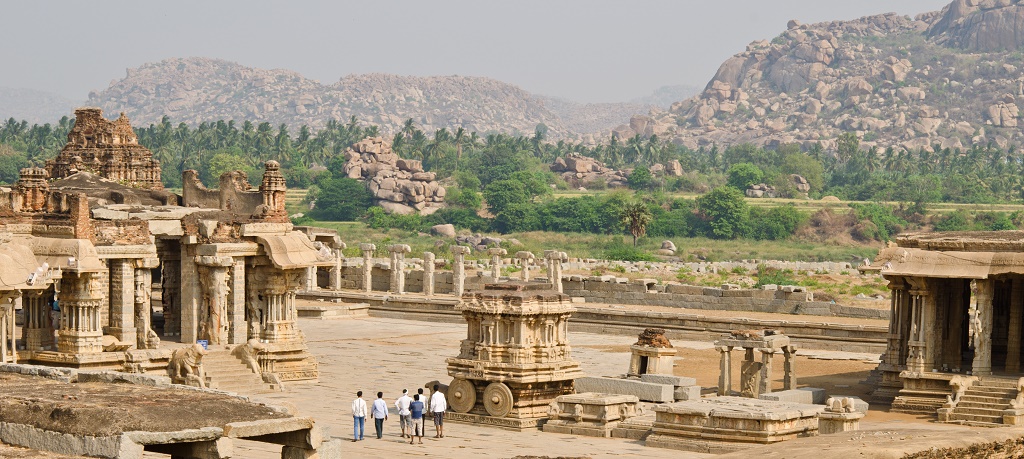
Things you don’t want to miss in India!
-
Taj Mahal is one of the world’s greatest buildings. You shouldn’t miss it.
-
Madurai is one of the oldest cities in South Asia. It is also known as the temple city because of its many temple complexes. A must see!
-
For beach lovers, Goa is a must.
-
If you are visiting in Winter time, visit Gangtok... check out the frozen lake, and travel up to the China Border too. The place has great monasteries!
-
India is famous with its festivals and you can catch a festival during your stay no matter which season you visit.
-
Visit the Ruins of the city of victory “Vijayanagar” better known as “Hampi”
-
Enjoy boating on the backwaters of Kerala through the lush tropical waterways of India’s Deep South.
-
Camel trekking at the Great Indian Desert can be very romantic touristic experience or ride an elephant bareback, Jaipur has plenty.
-
Amritsar is a city in the Punjab, in northwest India. It is a holy place for members of the Sikh religion, and worth visiting for its famous Golden Temple.
-
Window shop at a market: the markets in India are so lively and absorbing, you don't have to buy anything to enjoy them. These include Chandni Chowk in Delhi, New Market in Kolkata, Johari Bazaar and Chameliwala Market in Jaipur, and Chor Bazaar and Crawford Market in Mumbai. These chaotic and congested markets will keep you absorbed for hours.
Cities of India
Mumbai

Mumbai is big. It is full of dreamers and hard-laborers, starlets and gangsters, stray dogs and exotic birds, artists, servants and millionaires and lots of other people. It has the most prolific film industry, some of Asia’s biggest slums (and the world’s most expensive home) and the largest tropical forest in an urban zone. It is India’s financial powerhouse, fashion epicenter and a pulse point of religious tension.
Bangalore
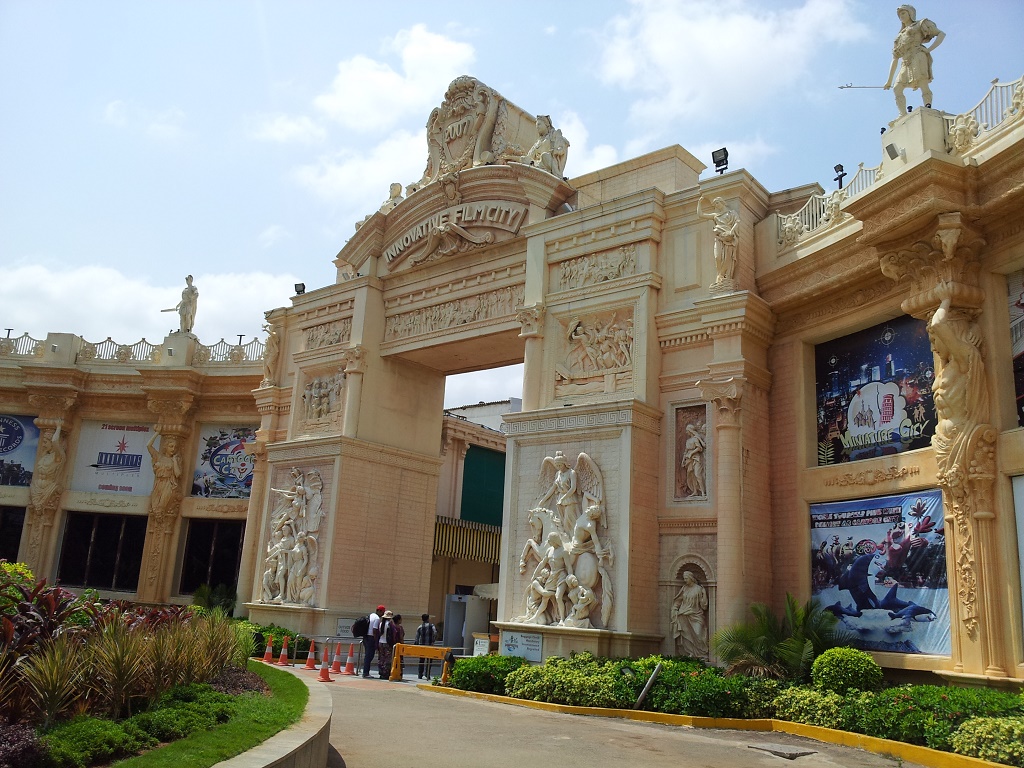
Known as both the "Garden City" and "The Silicon Valley of India," Bangalore is a technological paradise, boasting the highest concentration of IT companies in the country. When you are done working, there are plenty of gardens, museums, natural features, palaces and temples to fill your day. Visit Vidhana Soudha, Cubbon Park and the Ulsoor Lake of Bangalore, well known for its beautiful locales and boating facilities. Bangalore is also a major center of Indian classical music and dance, and of vivid, cutting-edge nightlife.
Jaipur

Jaipur is one of the most important cities in India from the point of tourism; Jaipur is a land of natural beauty and great history. Also called pink City, it is the capital of Rajasthan. It is well connected to the other parts of the world, through its vast network of airways, railways and roads. The palaces of Jaipur are the favorite spots for tourists, both Indian and foreign. Many old and neglected palaces and forts in Jaipur have been converted into heritage hotels. Jaipur is the nucleus of Education in Rajasthan. The city houses several reputed colleges that attract students from different parts of the globe.
Agra

The magical allure of the Taj Mahal draws tourists to Agra. But the Taj Mahal is not a stand-alone attraction. The legacy of the Mughal empire has left a magnificent fort and a liberal sprinkling of fascinating tombs and mausoleums; and there is also fun to be had in the bustling marketplaces. Agra sits on a large bend in the holy Yamuna River. The fort and the Taj, 2km apart, both overlook the river on different parts of the bend. The main train and bus stations are a few kilometers southwest.
Delhi
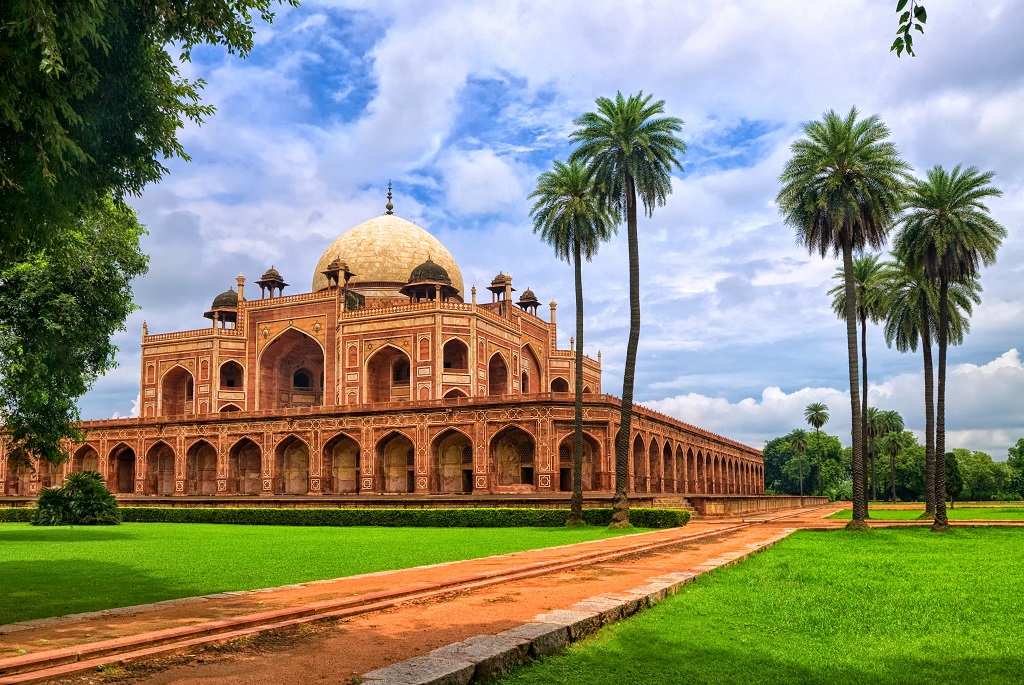
Mystery, magic, chaos... Welcome to Delhi, where the ruins of Mughal forts and medieval bazaars are scattered between the office blocks, shopping malls, and tangled expressways. India’s capital is littered with the relics of lost empires. Modern Delhi is a chaotic embroidery of medieval fortifications, Mughal mausoleums, dusty bazaars, and colonial-era town planning. Navigating Delhi's seven cities is made infinitely easier by the metro.
Jodhpur - Or the Blue City of Jodhpur...
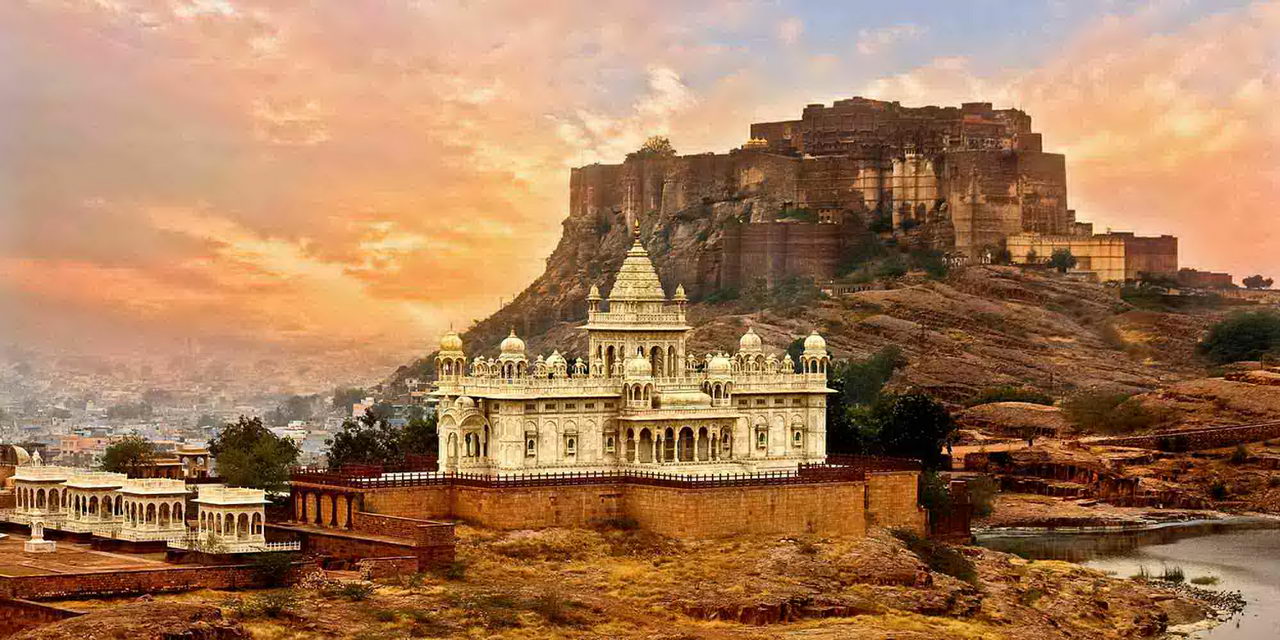
Modern Jodhpur stretches well beyond the city walls, but it is the immediacy and buzz of the old Blue City and the larger-than-life fort that capture travelers’ imaginations. The old city has something like 100 guesthouses, most of which scramble for your custom within half a kilometer of Sardar Market and its landmark clock tower. This crowded, hectic zone is also Jodhpur’s main tourist shopping and eating area, and it often seems you cannot speak to anyone without them trying to sell you something.
Beach holidays
Culture packages
Travel deals
Entering this website you automatically agree the following terms and conditions even if You are not a registered user of the site. Images shown on the website, country and travel specifications, as well as the webdesignes are subject to copyright protection, Elegant Enterprises are All rights reserved. Prohibited the website all or partial copy, store, use, distribution and sale, without the written consent of the copyright owner of this website (Elegant Enterprises)